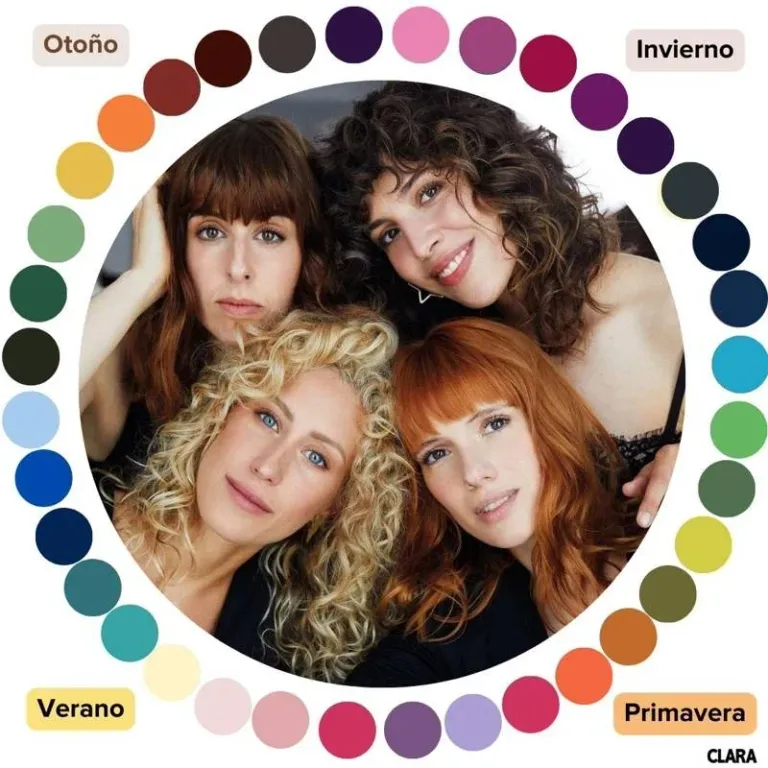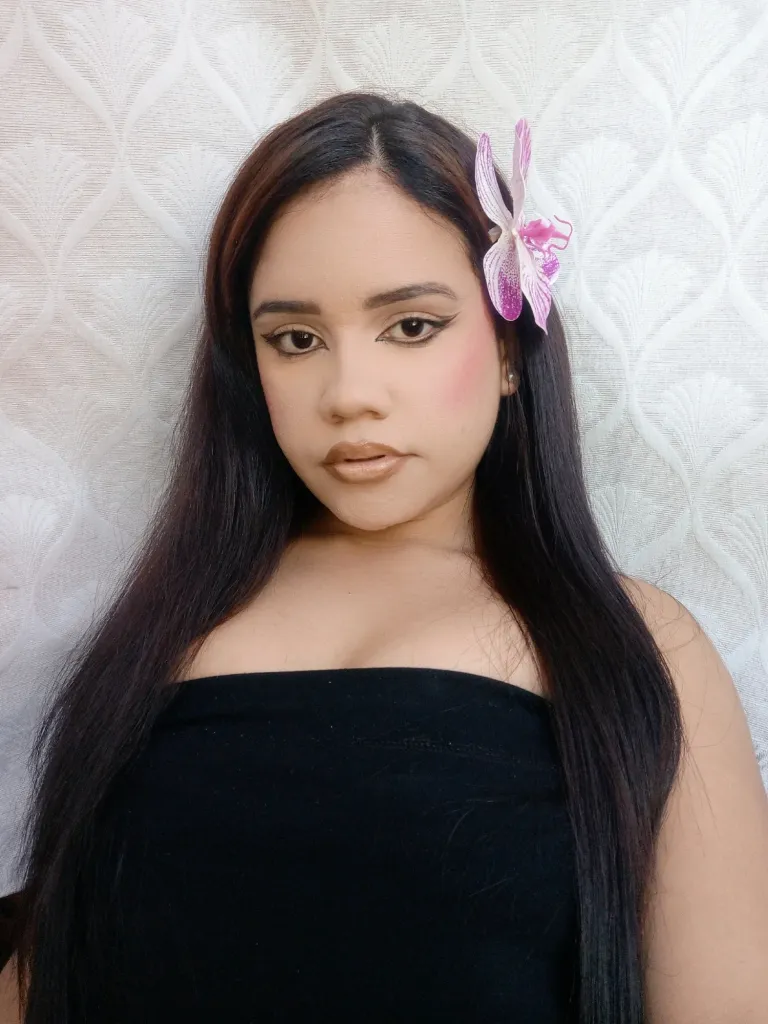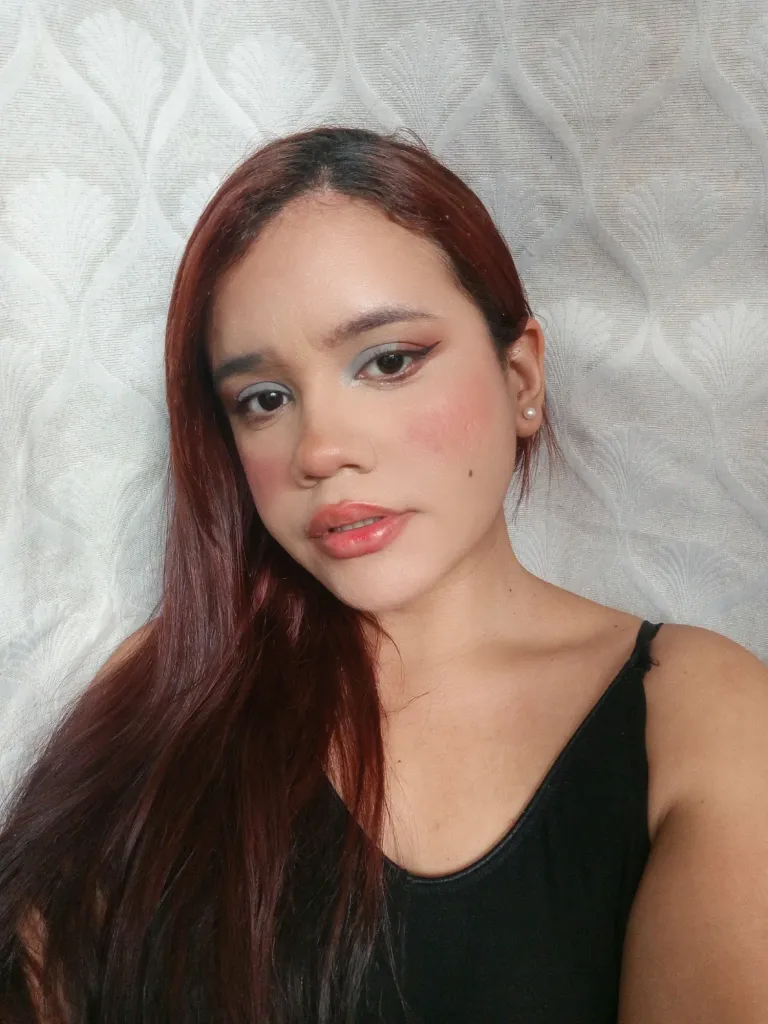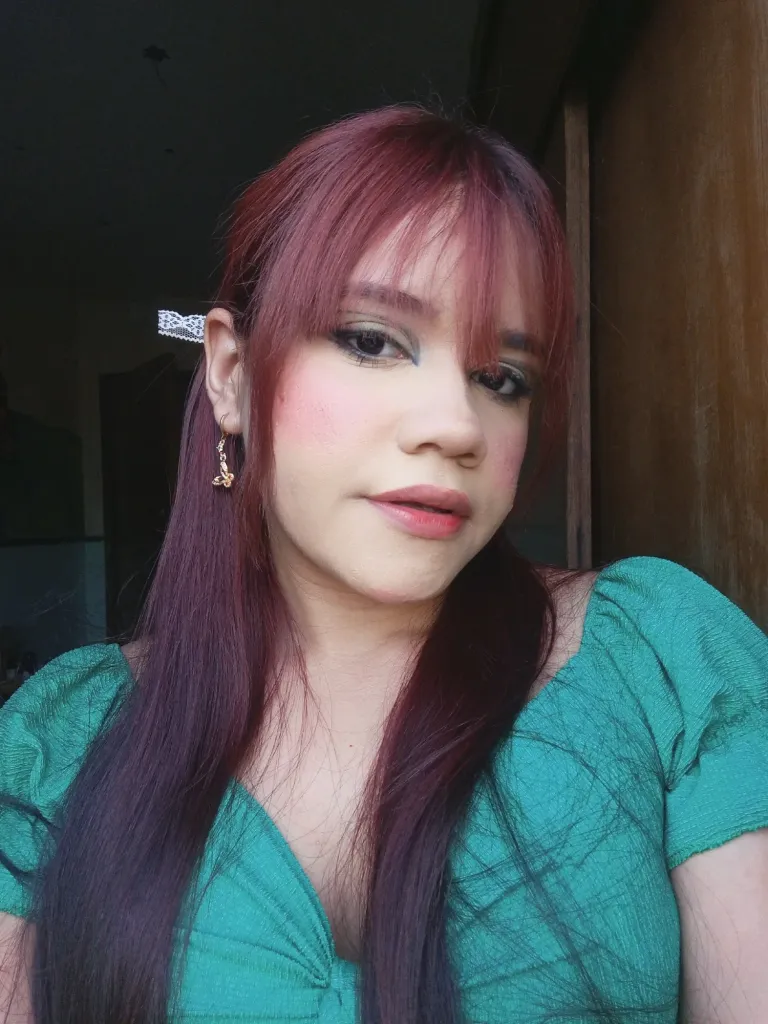[ENG - SPA] Hablemos acerca de la colorimetria y como puedes mejorar tu aspecto con ella 🎨🌈🫰🏻








Hello LIKETU friends!
In this post, I’m going to talk a little bit about colorimetry and how it can help you change your look and give you a beautiful glowup to awaken the Goddess in you.
I have repeatedly seen on social media the question “Do you know if you have spring, summer, fall or winter skin?” And that same question is asked at the beginning of the 1980 book “Beautiful Colors: Choosing the Color That’s Right for You” by Carole Jackson. The American devotes this book to explaining how a person should choose what to wear based on their skin tone, hair and eye color, for which she defines them as the four “seasons” and 16 subgroups of colors.
For example, a “summer” girl should wear bright colors to highlight her features, and a “winter” girl should choose dramatic, soft tones. Popularized as “color analysis or colorimetry,” this topic has been a niche topic for many years, now gaining prominence in social networks adding to new trends on platforms such as TikTok and the arrival of artificial intelligence to the market such as fashion or personal image.
More than a year ago colorimetry joined the trend or virality of TikTok. For which, in countries like South Korea, pioneers in colorimetry and so they practice it for decades and has even become a destination for tourists to travel at high prices just to receive the best analysis on this issue of color, but the faith in color has become a very important factor.
If you search for “color analysis” on Tiktok or any social network, you will get too many results, some with millions of views, mainly from influencers explaining how to follow the right steps to find clothes that best suit your skin color or testing for the same. Arguably a very well exploited and monetized business, if you ask me.
So this brings us to the question of “What is colorimetry and how is it used?”
Colorimetry is the science that studies the qualitative and quantitative measurements of color. It is used to find out what colors suit us best in makeup, clothing, hair and even interior decorating. This is a branch of science that is dedicated to the study and measurement of colors, focusing on how we perceive them as humans.
The same if well used can become a natural “filter” for our face, since we can make them invisible by determining the expression lines or, on the contrary, highlight them. Knowing which colors suit us will help us to know ourselves better and to get more out of ourselves. Actually, colorimetry can completely transform your look or ruin it completely.
Therefore, knowing whether the colors that predominate in your skin are within the range of cool or warm tones will help you to better choose the clothes you wear, your makeup and the accessories that make up your style. The colors you choose will naturally enhance your beauty.
Now, how do I know which colors suit my skin best?
By taking into account the various parameters found such as: Skin color, eye color and hair color, it will be possible to determine what your color harmony is. The idea that the colors that come from blue would be cold and those that come from red and yellow would be the warm ones is used as a base.
There are also experts who complicate these criteria of cold and warm harmonies a bit more and incorporate the Theory of the 4 Seasons, which says that each season has its range of colors and that our physical features fit more into one of them. The theory is based on these reasons: If the colors reflect very clearly the changes of the season and that color is a very harmonious thing. The Theory of Seasons divides people into spring, summer, autumn and winter. Actually, this is the theory that I like the most because it is the most complete. Here I explain each one:
- Spring: it is a light season where warm and bright colors are rewarded. In this palette you can find shades such as bright green, colorar or sunny yellow.
- Summer: Like spring, it is a light season, however, the reference colors are cooler and softer, rather pastel shades such as powdered pink, baby blue or mint green.
- Autumn: Although it is a cold season, it is dominated by warm colors such as olive green, mustard, orange or brown.
- Winter: It is the coldest season of the year and, unlike autumn, it is characterized by cold and bold colors and dark shades. Examples are electric blue, purple, magenta or emerald.
To find out what color suits your skin type or what station you belong to, you can take a test that evaluates how different shades highlight some of your features such as eye color, for example. However, experts use this method to know what colorimetry you belong to by taking into account these three variables: eye color, hair color and skin color.
A quick trick to know your colorimetry is to place a piece of cloth just under your chin, in a place with good natural light and in front of a mirror. Use two colors: orange and pink. The color that most favors you and will determine your harmony will be the one that illuminates your face and makes the spots disappear, if not completely, then partially. And the one that does not favor you will give you a more irregular and dull appearance.
If orange is the one that favors you you are warm harmony and if it is pink you are cold harmony. However, this trick can be risky because there are so many shades of pink and orange to choose from.
These would be the colors according to the criteria explained above if you are:
🎨Warm skin: people with warm skin tend to have yellow, golden or peach undertones. If you have this type the colors that will flatter you the most in clothes and makeup are:
- Red
- Orange
- Yellow
- Green
- Brown
- Cream
- Gold
- Olive green
🎨Cold skin: You will succeed if you choose gray, bluish, violet and brownish green tones. For your foundation, go for a pinkish tone, you will see how they highlight your features. However, if your colorimetry study shows that you have pink, bluish or reddish undertones, it means that you have cool skin. The colors that should not be missing in your closet are:
- Blue
- Lavender
- Pink
- Silver
- Purple
- Emerald or jade
- Burgundy or cherry
- Bright white
These tones will highlight the richness of your skin, making you look vibrant and fresh. As for me, I have cold skin, because my eyes are dark, my hair is dark and the color of my veins are between blue and greenish, so colors like vinotint, cherry, black, dark blue, fuchsia and others are good for me.
You can realice that thanks to colorimetry we can make a color analysis to everything we want, but more importantly to change our appearance. Through it, we can reflect our personality and our tastes, giving prominence to those colors that best suit us and that bring out our true beauty. And well, now that you know what colors go with each skin tone, it can be an incredible excuse to renew your closet and have that glowup or change you’ve wanted so much.
¡Hola amigos de LIKETU!
En este post, te voy a hablar un poco acerca de la colorimetría y como está te puede ayudar a cambiar tu aspecto y darte un glowup muy bonito para despertar la Diosa que llevas dentro.
He visto repetitivamente en las redes sociales la pegunta de “¿Sabes si eres de piel de primavera, verano, otoño o invierno?" Y que esa misma pregunta se hace al comienzo del libro de 1980 “Beautiful Colors: Choosing the Color That's Right for You” de Carole Jackson. La estadounidense dedica este libro a explicar cómo una persona debe elegir qué ponerse en función de su tono de piel, cabello y color de ojos, para lo cual los define como las cuatro "estaciones" y 16 subgrupos de colores.
Por ejemplo, una chica “verano” debe usar colores brillantes para resaltar sus rasgos, y una chica de “invierno” debe elegir tonos dramáticos y suaves. Popularizado como “análisis de color o colorimetría”, este tema ha sido un tema de nicho durante muchos años, cobrando ahora protagonismo en las redes sociales sumándose a las nuevas tendencias en las plataformas como TikTok y la llegada de la inteligencia artificial al mercado como la moda o la imagen personal.
Hace más de un año la colorimetría se sumó la tendencia o viralidad de TikTok. Por lo cual, en países como Corea del Sur, pioneros en la colorimetría y por lo que lo practican desde hace décadas e incluso se ha convertido en un destino para que turistas viajen a precios elevados solo para recibir los mejores análisis en este tema del color, pero el fenómeno solo se intensificó después de que se volvió viral en TikTok. Según varios blogs que he estado leyendo, muchos extranjeros viajan a Seúl cada año para gastar grandes cantidades de dólares en este servicio de análisis de color más popular que tiene el país.
Si buscas "análisis de color" en Tiktok o en cualquier red social, obtendrás demasiados resultados, algunos con millones de visitas, principalmente de influencers que explican cómo seguir los pasos correctos para encontrar ropa que se adapte mejor a tu color de piel o la realización de test para el mismo. Podría decirse que es un negocio muy bien explotado y monetizado, si bien me preguntan.
Entonces esto nos lleva a la pregunta de “¿Qué es la colorimetría y como se usa?”
La colorimetría es la ciencia que estudia las medidas cualitativas y cuantitativas del color. Se usa para saber qué colores nos favorecen más en el maquillaje, la ropa, el cabello y hasta en la decoración de interiores. Esta es una rama de la ciencia que se dedica al estudio y medición de los colores, enfocándose en cómo los percibimos como humanos.
La mismas si bien utilizada puede convertirse en un “filtro” natural para nuestro rostro, puesto que podemos llegar que las mismas sean invisibles determinando las líneas de expresión o, por el contrario, remarcarlas. Conocer qué colores nos sientan bien nos ayudará a conocernos mejor y a sacarnos más partido. Realmente la colorimetría puede transformar completamente tu look o nos lo puede arruinar completamente.
Por eso, conocer si los colores que predominan en tu piel están dentro del rango de los tonos fríos o cálidos, te ayudarán a elegir mejor la ropa que te pones, tu maquillaje y los accesorios que componen tu estilo. Los colores que elijas realzarán tu belleza de forma natural.
Ahora bien, ¿Cómo puedo saber qué colores le van mejor a mi piel?
Teniendo en cuenta los diversos parámetros que se encuentran como: El color de piel, color de ojos y color de pelo, se podrá determinar cuál es tu armonía de color. Se utiliza como base la idea que los colores que vienen del azul serían fríos y los que vienen del rojo y del amarillo serían los cálidos.
También hay expertos que complican un poco más estos criterios de armonías frías y cálidas e incorporan la Teoría de las 4 estaciones, en la que se dice que cada estación tiene su gama de colores y que nuestros rasgos físicos encajan más en uno de ellos. La teoría se basa en estas razones: Si los colores reflejan de forma muy clara los cambios de la estación y que el color es algo muy armónico. La Teoría de las estaciones divide las personas en primavera, verano, otoño e invierno. En realidad, esta es la teoría que más me gusta debido a que es la más completa. Aquí te explico cada una:
• Primavera: Es una estación ligera donde premian los colores cálidos y brillantes. En esta paleta se encuentran tonos como el verde brillante, el color colorar o el amarillo soleado.
• Verano: Al igual que la primavera es una estación ligera, sin embargo, los colores de referencia son más fríos y suaves, tonalidades más bien pastel como el rosa empolvado, el azul bebé o la verde menta.
• Otoño: Si bien se trata de una estación fría, en ella predominan los colores cálidos como el verde oliva, el color mostaza, el naranja o el marrón.
• Invierno: Es la estación más fría del año y, a diferencia del otoño, está caracterizada por los colores fríos y atrevidos y a su vez las tonalidades oscuras. Muestra de ello son el azul eléctrico, el morado, el magenta o el esmeralda.
Para descubrir qué color le va mejor a tu tipo de piel o a que estación perteneces, puedes realizar una prueba que evalúa cómo diferentes tonos resaltan algunas de tus características como el color de ojos, por ejemplo. Sin embargo, expertos utilizan este método para saber a qué colorimetría perteneces teniendo en cuenta estas tres variables: color de ojos, color de cabello y color de piel.
Un truco rápido para conocer tu colorimetría es colocar una pieza de tela justo debajo de tu barbilla, en un lugar con buena luz natural y delante de un espejo. Utiliza dos colores: el naranja y el rosa. El color que más te favorece y determinará tu armonía será el que ilumine tu cara y haga que desaparezcan las manchas, si no totalmente, en parte. Y el que no te favorece te dará un aspecto más irregular y apagado.
Si el naranja es el que te favorece eres armonía cálida y si es el rosa eres armonía fría. Sin embargo, este truco puede ser arriesgado porque hay muchos tonos de rosa y naranja para elegir.
Estos serían los colores de acuerdo al criterio que se explicó anteriormente si eres:
🎨Piel cálida: Las personas con piel cálida tienden a tener subtonos amarillos, dorados o melocotón. Si tienes este tipo los colores que más te favorecerán en ropa y maquillaje son:
• Rojo
• Naranja
• Amarillo
• Verde
• Marrón
• Crema
• Oro
• Verde oliva
🎨Piel fría: Acertarás si escoges los tonos grises, azulados, violáceos y los verdes pardos. Para tu base de maquillaje, decántate por un tono rosado, verás cómo resaltan tus facciones. Sin embargo, si tu estudio de colorimetría muestra que tienes subtonos rosados, azulados o rojizos, quiere decir que tiene piel fría. Los colores que no deben faltar en tu closet son:
• Azul
• Lavanda
• Rosa
• Plata
• Púrpura
• Esmeralda o jade
• Borgoña o cereza
• Blanco brillante
Estos tonos destacarán la riqueza de tu piel, haciendo que luzcas vibrante y fresca. Por mi parte yo soy de piel fría, debido a que mis ojos son oscuros, mi cabello de igual forma y el color de mis venas son entre azules y verdosas por lo cual me vienen bien los colores como el vinotinto, cereza, negro, azul oscuro, fucsia entre otros.
Te puedes dar cuenta que gracias a la colorimetría podemos realizar un análisis de color a todo lo que queramos, pero más importante para cambiar nuestro aspecto. A través de la misma, podemos reflejar nuestra personalidad y nuestros gustos, dando protagonismo a aquellos colores que mejor nos sientan y que sacan a relucir nuestra verdadera belleza. Y bien, ahora que ya sabes qué colores van con cada tono de piel, puede ser una increíble excusa para renovar tu closet y tener ese glowup o cambio que tanto has querido.
For the best experience view this post on Liketu
Congratulations @genesis.sojar! You have completed the following achievement on the Hive blockchain And have been rewarded with New badge(s)
You can view your badges on your board and compare yourself to others in the Ranking
If you no longer want to receive notifications, reply to this comment with the word
STOP!LOL
lolztoken.com
But you can't piano a tuna.
Credit: reddit
@genesis.sojar, I sent you an $LOLZ on behalf of hivephoto
(3/10)
Farm LOLZ tokens when you Delegate Hive or Hive Tokens.
Click to delegate: 10 - 20 - 50 - 100 HP
He visto este tema mucho en redes pero sinceramente nunca supe la mejor manera de probarlo yo 😅. Pero ahora con tu explicación me parece mucho más sencillo de entender. Pronto probaré con el naranja y el rosa para ver cuál me queda mejor.
Muy buen post ✨
Muchas gracias amiguita💞☺️. Igual seguiré colocando post acerca del tema y también colocaré el test para que sepan que estación son y puedan ir guiandose 🫰🏻🎨